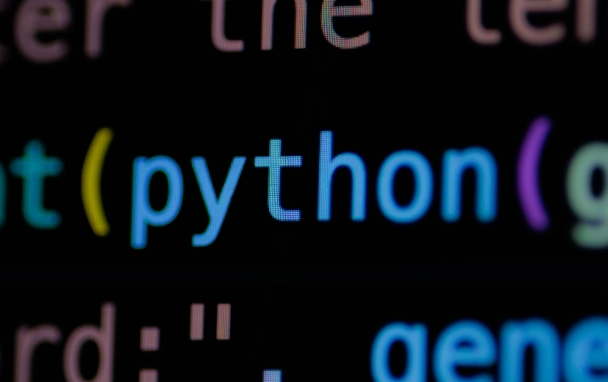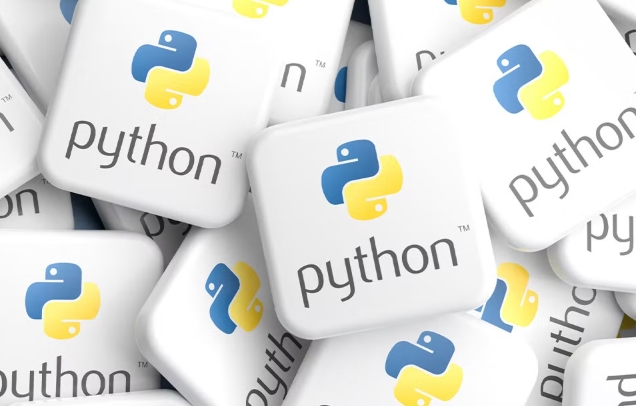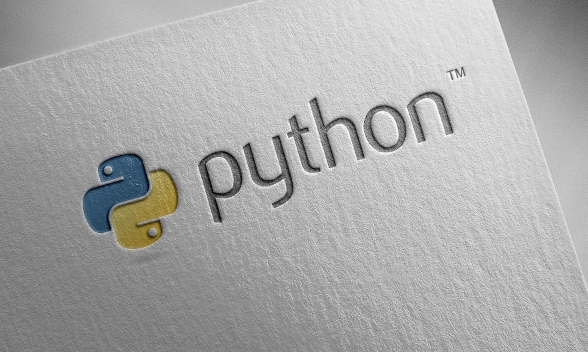Explain Python method overriding.
Jul 09, 2025 am 02:34 AMMethod rewriting refers to the subclass redefining the existing method of the same name in the parent class to achieve different behaviors. For example, the Dog class overrides Animal's spoke() method to output "Woof!". Usage scenarios include: different subclasses need to implement differently, keep the interface consistent, extend or modify the functions of the parent class. When overriding, you can use super() to call the parent class method to retain its functionality, such as calling Parent's show_info() in Child before adding new content. Notes include: method names and parameters must be consistent, avoid spelling errors, and use IDE prompts to ensure correct rewrite.

Method overriding in Python is an important concept in object-oriented programming, which mainly occurs in the inheritance relationship of classes. Simply put, a subclass can redefine methods inherited from the parent class to achieve different behaviors . This is very common in actual development. For example, if you have an "animal" class, there is a "kow" method, and the "dog" class and the "cat" class as its subclasses, you can rewrite this method separately to achieve their own different calls.

What is method rewriting?
Method rewriting refers to: a method with the same name as the parent class is defined in a subclass, thereby overwriting the behavior of the parent class . The purpose of this is to enable subclasses to provide different implementations according to their needs.

For example:
class Animal:
def speak(self):
print("Animal speaks")
class Dog(Animal):
def speak(self):
print("Woof!") Here, Dog class overrides speak() method, and when called, it outputs "Woof!" instead of "Animal speaks" of the parent class.

Method rewriting usage scenarios
Method rewriting is usually used in the following situations:
- Different subclasses need to have different behaviors for the same method.
- I hope to keep the interface consistent, but the specific implementation is different.
- The functions of the parent class method need to be extended or modified without affecting other code structures.
For example, you have multiple payment method classes (Alipay, WeChat, and bank card), which are all inherited from a Payment parent class, and each subclass needs to implement pay() method in its own way.
class Payment:
def pay(self, amount):
pass
class Alipay(Payment):
def pay(self, amount):
print(f"Alipay paid {amount} yuan.")
class WeChatPay(Payment):
def pay(self, amount):
print(f"WeChat paid {amount} yuan.")How to retain the parent class function while rewriting it?
Sometimes we don't want to completely overwrite the parent class's methods, but want to make some extensions based on it. At this time, you can use the super() function to call the parent class method.
For example:
class Parent:
def show_info(self):
print("This is parent class")
class Child(Parent):
def show_info(self):
super().show_info()
print("This is child class") Running Child().show_info() will first print the information of the parent class and then print the supplementary content of the subclass.
- Use
super()to avoid duplicate code- At the same time, it also enhances the maintainability of the code
Notes and common mistakes
- The method name must be exactly the same , including the parameter list, otherwise a new method is defined, not overridden.
- If you accidentally spell the method name incorrectly, such as writing it as
spek(), it will not trigger rewrite, and it will not report an error, which will easily cause bugs. - Some IDEs or editors can prompt you whether the method has been successfully rewrite, such as the icon prompt for PyCharm.
Basically that's it. Method rewriting is one of the most basic but practical functions of Python object-oriented programming. Mastering it well can allow you to write clearer and more flexible code structures.
The above is the detailed content of Explain Python method overriding.. For more information, please follow other related articles on the PHP Chinese website!

Hot AI Tools

Undress AI Tool
Undress images for free

Undresser.AI Undress
AI-powered app for creating realistic nude photos

AI Clothes Remover
Online AI tool for removing clothes from photos.

Clothoff.io
AI clothes remover

Video Face Swap
Swap faces in any video effortlessly with our completely free AI face swap tool!

Hot Article

Hot Tools

Notepad++7.3.1
Easy-to-use and free code editor

SublimeText3 Chinese version
Chinese version, very easy to use

Zend Studio 13.0.1
Powerful PHP integrated development environment

Dreamweaver CS6
Visual web development tools

SublimeText3 Mac version
God-level code editing software (SublimeText3)

Hot Topics
 Polymorphism in python classes
Jul 05, 2025 am 02:58 AM
Polymorphism in python classes
Jul 05, 2025 am 02:58 AM
Polymorphism is a core concept in Python object-oriented programming, referring to "one interface, multiple implementations", allowing for unified processing of different types of objects. 1. Polymorphism is implemented through method rewriting. Subclasses can redefine parent class methods. For example, the spoke() method of Animal class has different implementations in Dog and Cat subclasses. 2. The practical uses of polymorphism include simplifying the code structure and enhancing scalability, such as calling the draw() method uniformly in the graphical drawing program, or handling the common behavior of different characters in game development. 3. Python implementation polymorphism needs to satisfy: the parent class defines a method, and the child class overrides the method, but does not require inheritance of the same parent class. As long as the object implements the same method, this is called the "duck type". 4. Things to note include the maintenance
 2025 quantitative trading skills: Python's automatic brick-moving strategy, making a daily profit of 5% as stable as a dog!
Jul 03, 2025 am 10:27 AM
2025 quantitative trading skills: Python's automatic brick-moving strategy, making a daily profit of 5% as stable as a dog!
Jul 03, 2025 am 10:27 AM
The digital asset market attracts global attention with its high volatility. In this environment, how to steadily capture returns has become the goal pursued by countless participants. Quantitative trading, with its dependence on data and algorithm-driven characteristics, is becoming a powerful tool to deal with market challenges. Especially in 2025, this time node full of infinite possibilities is combined with the powerful programming language Python to build an automated "brick-moving" strategy, that is, to use the tiny price spreads between different trading platforms for arbitrage, which is considered a potential way to achieve efficient and stable profits.
 Python `@classmethod` decorator explained
Jul 04, 2025 am 03:26 AM
Python `@classmethod` decorator explained
Jul 04, 2025 am 03:26 AM
A class method is a method defined in Python through the @classmethod decorator. Its first parameter is the class itself (cls), which is used to access or modify the class state. It can be called through a class or instance, which affects the entire class rather than a specific instance; for example, in the Person class, the show_count() method counts the number of objects created; when defining a class method, you need to use the @classmethod decorator and name the first parameter cls, such as the change_var(new_value) method to modify class variables; the class method is different from the instance method (self parameter) and static method (no automatic parameters), and is suitable for factory methods, alternative constructors, and management of class variables. Common uses include:
 Understanding the Performance Differences Between Golang and Python for Web APIs
Jul 03, 2025 am 02:40 AM
Understanding the Performance Differences Between Golang and Python for Web APIs
Jul 03, 2025 am 02:40 AM
Golangofferssuperiorperformance,nativeconcurrencyviagoroutines,andefficientresourceusage,makingitidealforhigh-traffic,low-latencyAPIs;2.Python,whileslowerduetointerpretationandtheGIL,provideseasierdevelopment,arichecosystem,andisbettersuitedforI/O-bo
 Python Function Arguments and Parameters
Jul 04, 2025 am 03:26 AM
Python Function Arguments and Parameters
Jul 04, 2025 am 03:26 AM
Parameters are placeholders when defining a function, while arguments are specific values ??passed in when calling. 1. Position parameters need to be passed in order, and incorrect order will lead to errors in the result; 2. Keyword parameters are specified by parameter names, which can change the order and improve readability; 3. Default parameter values ??are assigned when defined to avoid duplicate code, but variable objects should be avoided as default values; 4. args and *kwargs can handle uncertain number of parameters and are suitable for general interfaces or decorators, but should be used with caution to maintain readability.
 Strategies for Integrating Golang Services with Existing Python Infrastructure
Jul 02, 2025 pm 04:39 PM
Strategies for Integrating Golang Services with Existing Python Infrastructure
Jul 02, 2025 pm 04:39 PM
TointegrateGolangserviceswithexistingPythoninfrastructure,useRESTAPIsorgRPCforinter-servicecommunication,allowingGoandPythonappstointeractseamlesslythroughstandardizedprotocols.1.UseRESTAPIs(viaframeworkslikeGininGoandFlaskinPython)orgRPC(withProtoco
 Explain Python generators and iterators.
Jul 05, 2025 am 02:55 AM
Explain Python generators and iterators.
Jul 05, 2025 am 02:55 AM
Iterators are objects that implement __iter__() and __next__() methods. The generator is a simplified version of iterators, which automatically implement these methods through the yield keyword. 1. The iterator returns an element every time he calls next() and throws a StopIteration exception when there are no more elements. 2. The generator uses function definition to generate data on demand, saving memory and supporting infinite sequences. 3. Use iterators when processing existing sets, use a generator when dynamically generating big data or lazy evaluation, such as loading line by line when reading large files. Note: Iterable objects such as lists are not iterators. They need to be recreated after the iterator reaches its end, and the generator can only traverse it once.
 Describe Python garbage collection in Python.
Jul 03, 2025 am 02:07 AM
Describe Python garbage collection in Python.
Jul 03, 2025 am 02:07 AM
Python's garbage collection mechanism automatically manages memory through reference counting and periodic garbage collection. Its core method is reference counting, which immediately releases memory when the number of references of an object is zero; but it cannot handle circular references, so a garbage collection module (gc) is introduced to detect and clean the loop. Garbage collection is usually triggered when the reference count decreases during program operation, the allocation and release difference exceeds the threshold, or when gc.collect() is called manually. Users can turn off automatic recycling through gc.disable(), manually execute gc.collect(), and adjust thresholds to achieve control through gc.set_threshold(). Not all objects participate in loop recycling. If objects that do not contain references are processed by reference counting, it is built-in






